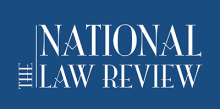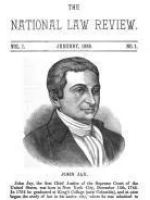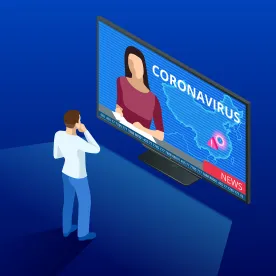COVID-19 upended business as usual across the country and the world. Companies large and small are challenged on multiple levels to comply with shifting state, local and federal regulations as the government responds to a virus that scientists are still trying to understand. Philip Hagan and James O’Reilly wrote COVID-19 and Other Pandemics: Business and Legal Challenges to help businesses address these challenges. Infused with analysis and background on issues readers need to understand — both scientific and legal — this book was written to be a practical guide to conducting business during COVID-19.
Philip Hagan and James O’Reilly are both public health experts with strong backgrounds in safety regulation. Philip Hagan is a consultant with Atlas Technical Consultants and a principal at International Risk Management, LLC, providing management consulting to companies all over the world, and he has a Lifetime Achievement Award from ABSA International and degrees from George Washington University and Georgetown University. James O’Reilly has taught Public Health and Food, Drug and Safety Laws for 39 years at the University of Cincinnati, College of Medicine and College of Law. He has worked with the FDA, CDC and CPSC since 1974 on various projects dealing with consumer product safety. Along with his work as the co-editor of the Accident Prevention Manual for the National Safety Council, he served in governments in the Cincinnati region. He graduated from Boston College and the University of Virginia School of Law.
Hagan and O’Reilly took some time to answer questions about their book, COVID-19 and Other Pandemics: Business and Legal Challenges.
COVID-19 has provided a multiple set of challenges for businesses, employers and organizations. What, in your opinion, makes this pandemic such a difficult scenario for businesses to navigate?
Jim O’Reilly (JO): Your margin for error is so small for your most valuable employees. Death is the outcome of the lung effects for those who do not have early access to a well-equipped hospital intervention. Those who survived, and who did not have robust medical insurance, have incurred hospital bills of approximately $87,000 each, to threaten their financial future. (Those over 65 have Medicare but may not have paid for the “MediGap” insurance for the extra cost and Part B “out of network” aspects, and may not have paid for Part D medication coverages, while the suite of drugs to save their lives were quite costly.) Bankruptcy or death? Inability to continue jobs that require robust movements? The more you learn the scarier it is.
Phil Hagan (PH): One major issue is our overall lack of knowledge and political discourse across the world that has colored the science related to the virus, SARS-CoV-2 and the disease, COVID-19. The body of knowledge related to this pandemic changes on an almost daily basis. Even on a simple question regarding modes of transmission, issues such as infection through fomites, person-to-person aerosolization, re-entrainment of the virus from floors, clothing or even masks result in the consensus on science being uncertain at best. However, the scientific community is gathering information at a rate that has not been seen in previous pandemics and the hope is that the picture will get clearer day by day.
COVID-19 seems to provide a plethora of areas that businesses need to be worried about and address. What do businesses need to focus on and prioritize to come through the current pandemic successfully?
PH: Active response plans that minimize potential SARS-CoV-2 exposures to their employees and customers. In many cases, the CDC and other government entities provide several elements that can be incorporated into business operating scenarios.
JO: Prevention of transmission of the viral droplets and aerosols in indoor spaces is key. Masks are truly “life savers” and handwashing and reduction of skin transmission must be a key discipline.
In many cases, the current pandemic has demonstrated problem areas that people were unaware are a concern. How does this book help business leaders anticipate scenarios they may not have considered before?
PH: Yes. One example would be the force majeure clause found in many contracts. Typically construed narrowly, they are not often a factor but in the current situation, these clauses, along with the concepts of impracticability and impossibility, have become very real elements of dealing with contractual business relationships. We try to provide an understanding, using examples, of how to wade through these and other concepts that before were previously more relevant in a law school environment.
JO: My first job in 1965 was changing filters inside large rooftop air handling systems in Manhattan, coming home on the subway smelling of dust and smoke. Ventilation screening and rates of air exchanges for indoor spaces rarely drew attention until experts with black-light cameras detected that the viral aerosol particles were going from one exhaling person to a nearby unsuspecting person. As an early example, a choir in a West Coast church had one singer’s exhaled breath as the root of a dozen COVID infections in the weeks after choir practice. We look at the source of COVID transmission and can deduce that reduction of spread of viral particles through indoor air is key.
In many situations, COVID-19 can create a domino effect of scenarios, especially in a workplace context. What information can help general counsel and other business leaders anticipate potential problem areas and address those problems?
JO: “Root cause analysis” is a fancy way to describe what we public health professors teach. This virus is sneaky and subtle. Optimal responses include having a consultant examine where the air flow carries the viral particles that enter the lungs and how that can cause the rapid destructive effects on the ability to breathe. Zika needed a mosquito suppression solution; Ebola needed a washing and dermal protection solution. We can’t stop breathing, but we can prevent breathing-in of the COVID particles by testing employees, quarantining positive responders, screening the visitor’s or customer’s exhaled air away from the employee, and isolating those with possible cases before they can replicate the illness in indoor spaces.
PH: This occurrence could be likened to a “black swan” event — a rare event where the extreme impacts result in severe consequences and are often thought to have been predictable in retrospect. It is likely that business continuity planning in the future will endeavor to build more flexible response scenarios in order to successfully respond to such rare events as this pandemic. In effect, business plans should assume that a black swan event will occur, and develop strategies accordingly.
One way to do this is to structure deals with risk through contracts or other risk-shifting activities, assuming that this will happen again, sooner rather than later. An example would be similar to the concept of a “100-year flood” occurring in a floodplain where there is only a one percent chance of an occurrence in any given year, or once every 100 years. When several 100-year floods occur in a relatively short time period, future planning needs to take the impact of the extreme floods into account when developing the associated floodplain, either through excess insurance, changes in the building codes, or maybe not developing an area at all. Risk management professionals will incorporate the “new normal” into their risk-shifting response.
What long-term changes do you think will be implemented to business processes as a result of the pandemic?
PH: Business continuity plans will become a regular part of business strategy and planning. Evaluations of alternative supply chains and alternate sourcing of both raw materials and finished products will be incorporated into a business value chain as a way of minimizing risk to the bottom line.
In the past, many businesses have been reluctant to let employees work from home. With the pandemic response forcing many businesses to do just this, often the case is that the resulting response has been a success. Businesses will evaluate the pluses and minuses of employees working from home and where feasible, develop plans to take advantage of these scenarios. As a result, I suspect many businesses will look at minimizing their physical office space footprints.
JO: More rapid indoor air screening and removal; more building code modifications to deal with bad air flow situations; more remote work settings to reduce cramped spaces.
What are some guiding principles for businesses as things return to normal?
PH: Businesses will need to be flexible and nimble when responding to workplace challenges created by this pandemic, and be ready to implement temporary changes for the “new normal” — wherever it makes sense. Businesses are realizing that in many instances, using virtual platforms to conduct trainings, business meetings, and sales and information sessions is an example of conducting the new “business as usual” in a much more efficient way, with both cost- and time-saving implications.
Making some of the pandemic responses into permanent solutions will provide unintended consequences. For instance, letting employees work from home will result in better life/work balances; allowing for the reduction of office footprints should reduce overhead costs and increase profit margins; pollution impacts will be reduced as there is less traffic on our roads; and so on. In addition, many current business responses will become the norm — virtual meetings, online conferences, etc.
The pandemic has forced many businesses to think outside of the box, and many of them will turn this into competitive advantages in the marketplace.
Learn more: COVID-19 and Other Pandemics: Business and Legal Challenges.




 />i
/>i

